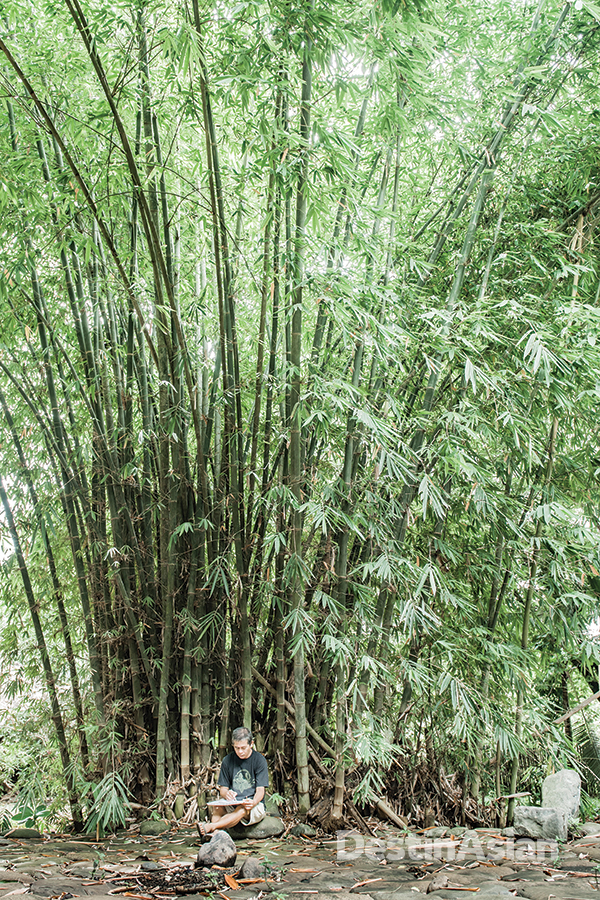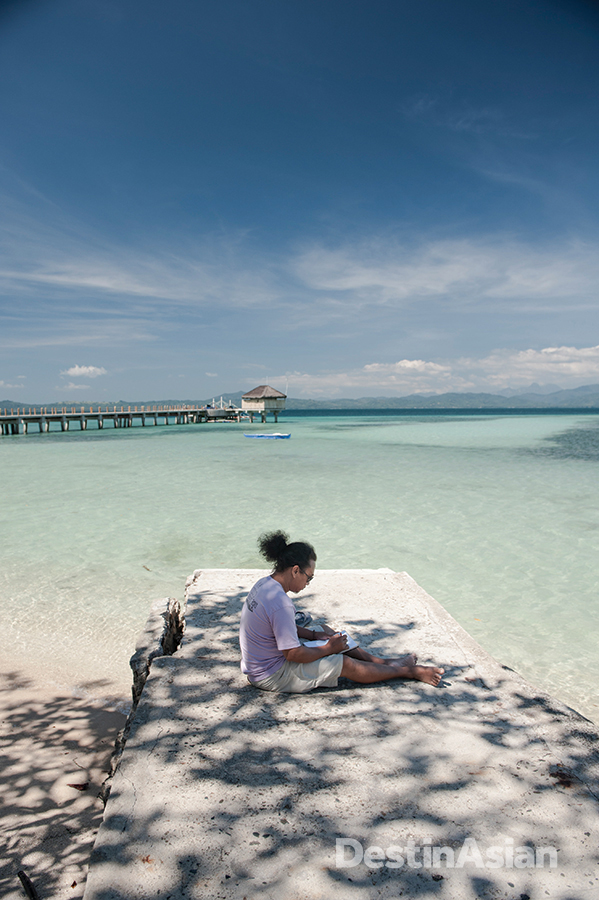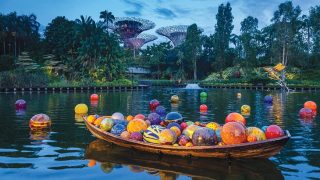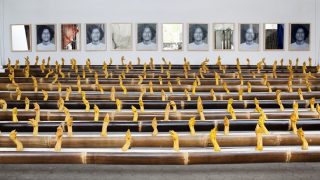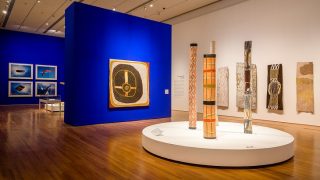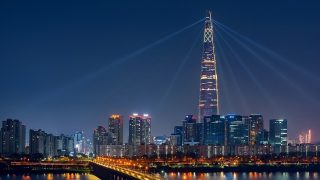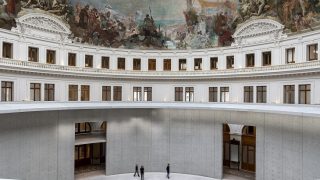If it wasn’t for Dinggot Conde-Prieto, the art scene here may never have started. She came to Puerto Princesa in 1988 from the urban sprawl of Baguio in the northern Philippines and describes Palawan back then as “a blank sheet of paper” without even a bookstore, let alone a place to show art. This prompted her to open the Kamarikutan Kafe and Galeri, an art space crafted from sustainable bamboo and thatch that was a deliberate move away from a conventional “sterile, formulaic gallery.” For 16 years, it nurtured local talent, before eventually closing. Now she runs Gypsy’s Lair Art Café, where diners can find Mendoza’s works hung alongside those of other local artists on the red walls.
A short drive north, Casa Nieves is a popular late-night hangout that also serves as the city’s latest art space, and it’s here that I meet Alvin Bayking standing beside a large-scale installation he crafted from bamboo that doubles as a tiered seating area for shows and band concerts. Bayking is also self-taught, a carpenter and woodworker who crafts his installations, sculptures, and interior objects from abandoned furniture and found driftwood. “Bamboo is the most sustainable building material in Palawan,” he says. “I want to show that what is seen as just firewood can become an art piece.”
Downstairs in the bar, I talk to Mario Lubrico, an abstract painter whose career began as an interior designer in Manila. He relocated to Palawan to escape the city and found inspiration in the luxuriant flora and fauna here—he describes it as his heaven. Now, his work comes as murals for resorts and commissions from patrons, such as the Kalinawa Art Foundation, a non-profit that helps put on the Indigenous Peoples’ Visual Art Exhibition each year and chose one of his paintings as its logo: a primitive man in front of a frond-framed landscape, rimmed in primary colors.
In Palawan’s highly localized art market, that’s about the common reach of a career. Benitez represented the Philippines in a recent exhibition put on by ArtNations, a nonprofit that works to integrate the global arts community, traveling to Berlin to show his works alongside those of other international “eco artists.” But aside from small outreaches such as that, Palawan’s art scene has yet to infiltrate the international—or even broader Asian—market. Art prices are lower than in Manila and show no signs of change. Like Lubrico, most artists get a trickle of commissions from local collectors and tourists but little patronage beyond that.
Will Palawan’s art scene ever outgrow its locality? “We need to penetrate the Philippines first before moving beyond,” says Conde-Prieto. “Let Manila be the marketplace and Palawan be the kitchen.” But when viewing the works with the mindset of their makers, the end goal doesn’t seem to be plunging into larger art-market waters; it’s more about conserving Palawan’s own.
THE DETAILS
Banwa A guesthouse and art café displaying Filipino arts and crafts in a lush garden setting (Liwanag St.; 63-48/434-8963).
Casa Nieves A relative newcomer to Puerto Princesa’s art scene, Casa Nieves hosts regular exhibitions, workshops, and parties (Libis Rd.; 63-48/ 723-1215).
Gypsy’s Lair Art Café An eclectic gypsy-themed café filled with paintings; it also hosts exhibitions and music events (Unit 20 Mercado de San Miguel, National Highway; 63-918/909-5571).
Kalui Restaurant The on-site gallery here is well worth a visit, while in the restaurant proper, the owner’s art collection takes up every available wall (369 Rizal Ave.; 63-48/433-2580).
Palawan Museum Regular art exhibitions complement a permanent collection that explores Palawan’s cultural traditions (Old City Hall Bldg., Mendoza Park; 63-48/433-2963).
This article originally appeared in the October/November print issue of DestinAsian magazine (“Palawan in the Picture”)


